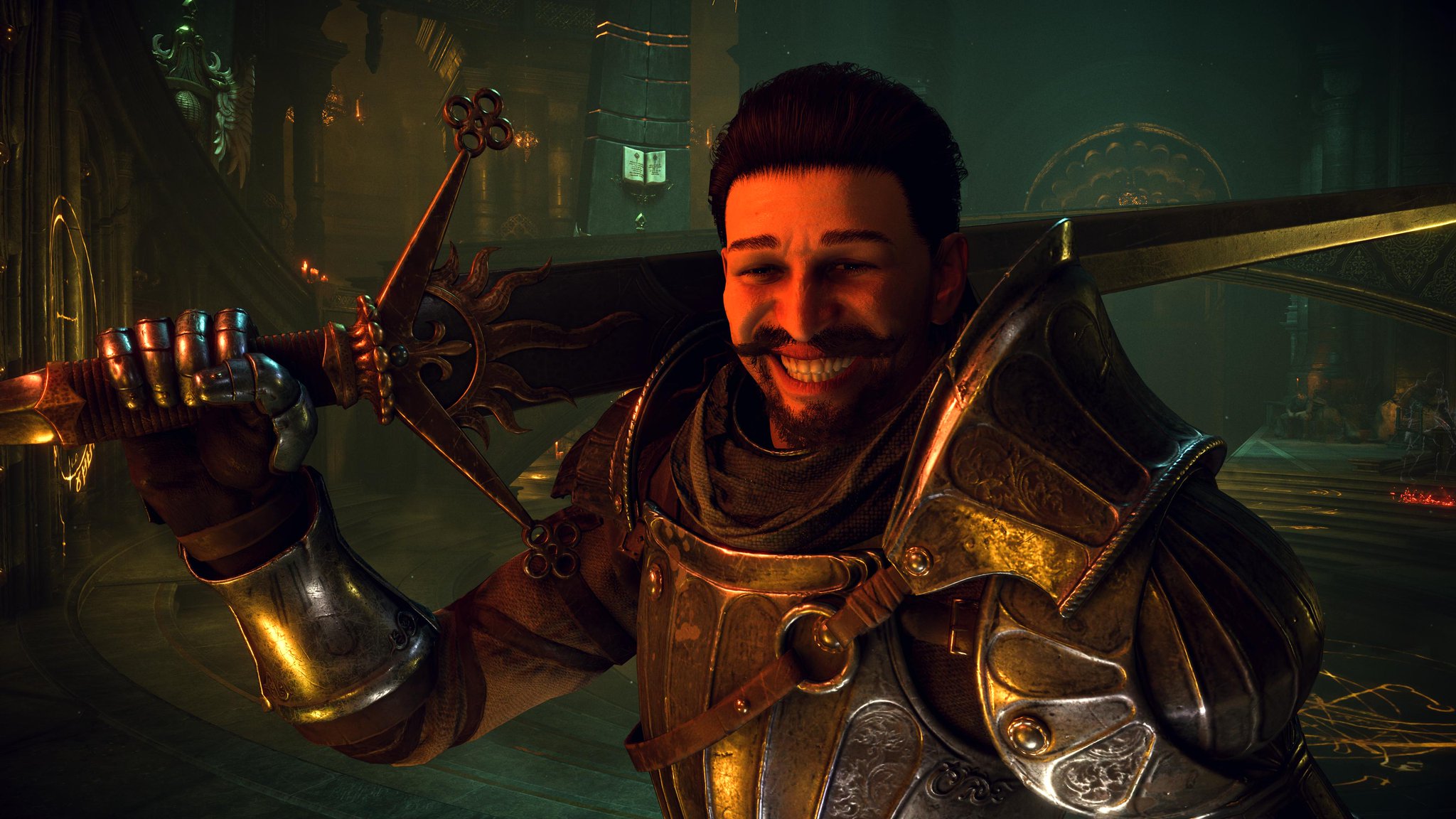While the original game played fantastically, it was unfortunately a casualty of that era's emphasis on gray and green-brown—think of the original
Gears of War or
Call of Duty 4: Modern Warfare. Color desaturation was often used as a poor way to make Xbox 360 and PS3 games look "grittier," while this year's
Demon's Souls proves that a game can revolve around darkness and gothic horror while opening up the palette without looking silly or overblown. For starters, dynamic lighting rules the day in
Demon's Souls, which means organic light sources like magic, fire, or your character's built-in, "soul"-driven glow can pump life into any indoor or outdoor scene. These bold sources of light (which look incredible in HDR) not only look realistic, but also confirm that the insane lighting and ambient occlusion system built into this game are
not relying largely on "pre-baked" models. (I'm sure some pre-baked effects are in the mix for efficiency's sake, but when you apply fire to your weapon of choice, then wave it around like a torch of sheer violence, beautifully cast shadows dance around in ways that would be very difficult to fake.)
With more pixel resolution and texture detail in the mix,
Demon's Souls can also subtly pump up the in-game color palette by dropping average brightness in a nighttime scene. As a result, lighting elements like a bed of nearby lava, a blue glow from a monster's helmet, or a large, blood-red moon fill in the color-information gaps accordingly, all without making the game too dark to maneuver through.
Stop and smell the dead roses
These lighting and color factors combine to make the game feel more real, less video gamey—in spite of, you know, the monsters and dragons trying to kill you. Even more impressive is the astounding geometric detail on every surface. Look at an average tree in the game, for example, and it's an explosion of detail: an abundance of apparent geometric texture for the wood itself, with zero apparent repeating textures, along with moss and nearby foliage winding around the full shape. Branches and knots sprout off every which way, in ways that look entirely unique for each tree you see. That tree is then surrounded by dense collections of dirt and rock, and that path leads to a building built stone by stone with, once again, dense detail for each stone, as opposed to some sort of flat-with-depth-texture exterior. Shine a single light on that stony building, and the global illumination model will bathe it in proper light and shadow.


